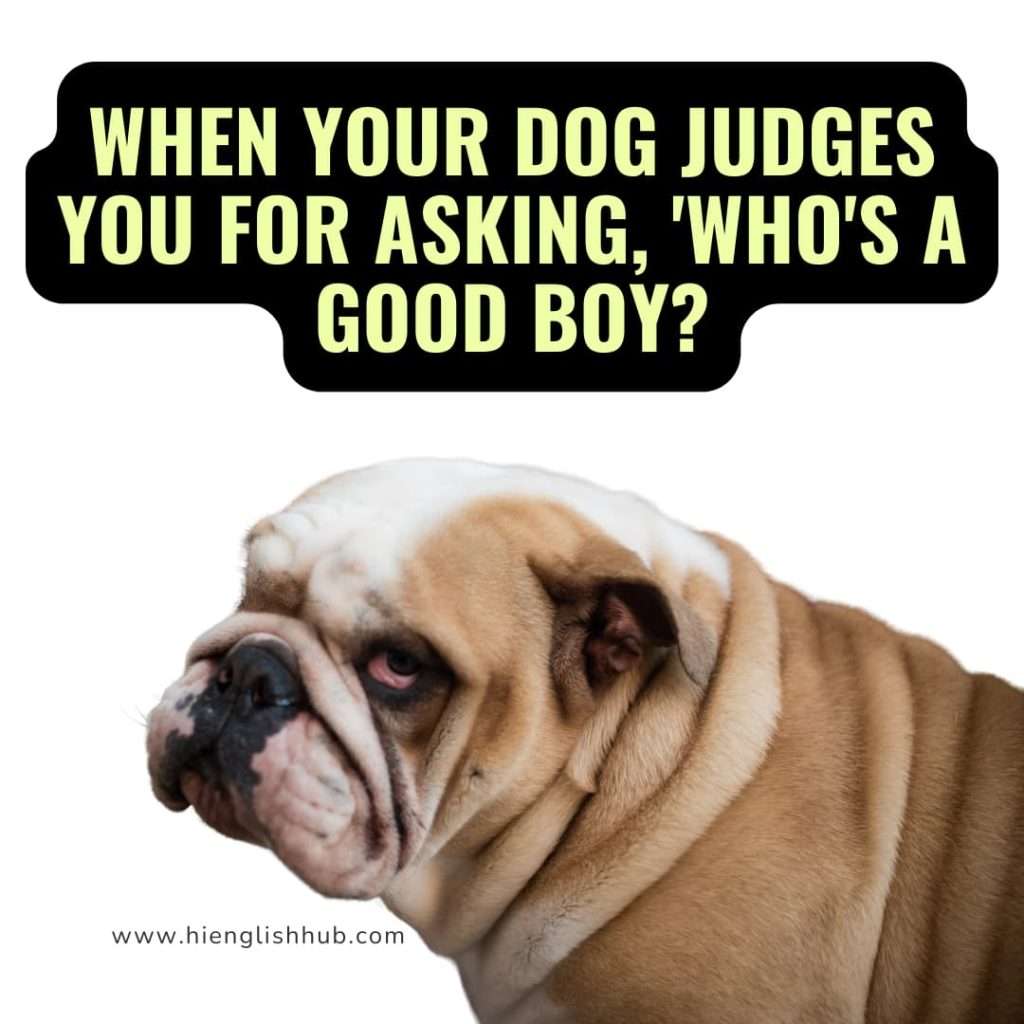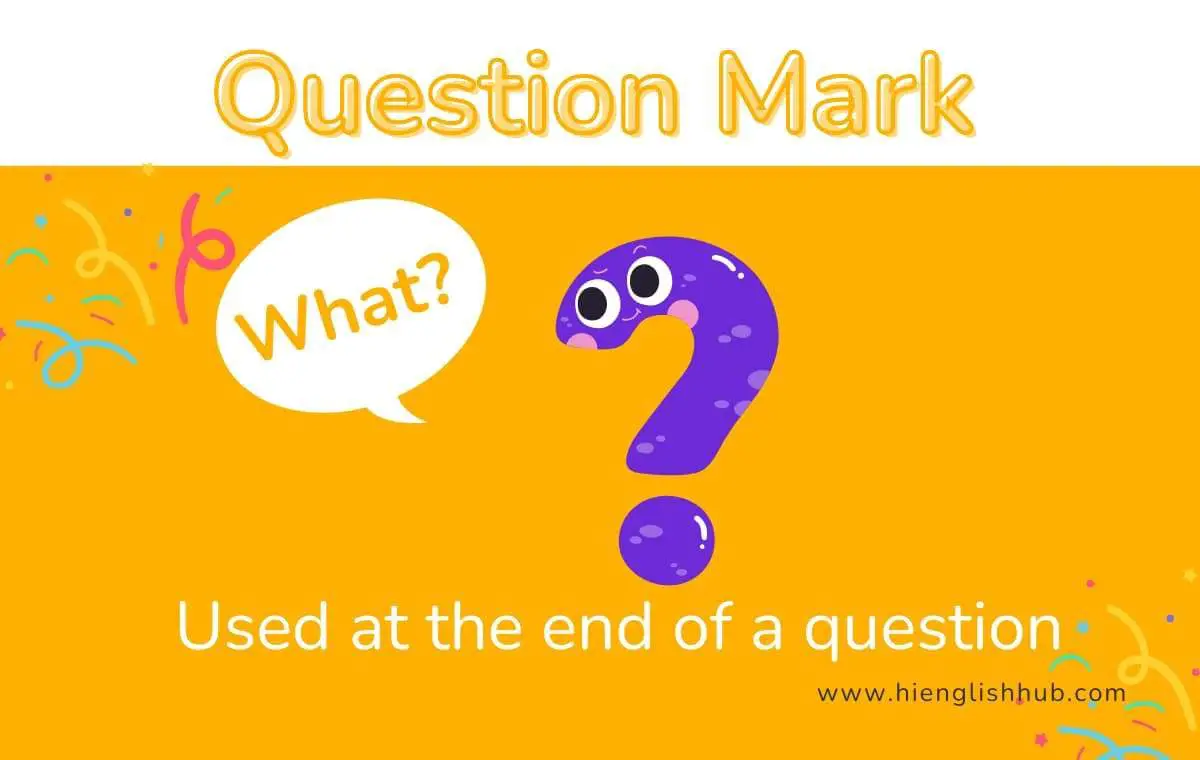Punctuation plays a crucial role in conveying meaning and tone in written communication. Among the various punctuation marks, the question mark stands out as a powerful tool for signaling queries and uncertainties.
Question marks aren’t only for writing; they’re part of our shopping adventures, too.
Ever considered adorning yourself with a Hello Kitty question mark tee shirt? Or assembling a 3D Lego model set with a Lego question mark? Even gender reveal parties now feature gold glitter question mark cupcake toppers.
You see how question marks can be fun and pop up in different parts of our lives.
What Is A Question Mark?
So, what exactly is a question mark?
Well. It is a punctuation that turns a regular statement into a friendly question. It’s that swirly symbol at the end that says, “Hey, I’m looking for an answer or just sparking a convo.”
The question mark is the signal for all things inquisitive.
Read on:
- Apostrophe Tips & Worksheet
- Ellipsis Tips For ESL Students
- Hyphen Hacks: Improve Your Writing
- Avoid Slash Mistakes: Easy Writing Tips
When To Use A Question Mark
Let’s talk about when to roll out the question mark.
1. Direct Questions: The most straightforward use is at the end of direct questions. You know, those sentences that demand answers, like “How are you?” or “What’s your favorite game?”
2. Implied Questions: It’s not always about spelling it out. If you’re implying a question or expressing uncertainty, the question mark does the job. For instance, “She’s coming, right?”
3. Question Tag: When a question ends a sentence that would otherwise require a different punctuation mark, the question mark takes charge. For example, “You’re coming to the party, aren’t you?”
4. Friendly Nudge: Sometimes, it’s the punctuation equivalent of a friendly nudge. Like when you say, “Thinking of a beach day tomorrow?” The question mark there is like a little invitation, asking, “What do you think?”
Remember, the question mark doesn’t play well with others at the end of a sentence. It’s either a period, an exclamation point, or a question mark—one punctuation mark per sentence, please!
Multiple Question Marks
Using multiple question marks in writing is generally not standard in formal writing, and it’s not recommended. In standard English usage, a single question mark is sufficient to indicate that a sentence is a question.
However, in informal writing, social media, or casual online communication, some people use multiple question marks for emphasis or to convey a heightened sense of surprise, excitement, or urgency. For example, “What were you thinking???” This usage is more informal and can be seen as a stylistic choice.
A Combination Of A Question Mark And An Exclamation Point
When a question mark meets an exclamation mark, they create a unique punctuation duo known as an “interrobang.” It’s a punctuation mark that conveys a mix of surprise and inquiry. It’s often used in writing to express a combination of a question and an exclamation.
Here’s an example:
“Did you really just eat the last slice of pizza‽”
The interrobang combines the rising inflection of a question with the excitement or astonishment of an exclamation, creating a unique punctuation mark to convey a specific tone. However, it’s worth noting that the interrobang is not as widely used as individual question marks or exclamation points in standard English writing.
FAQs On Question Marks
Do Question Marks Go Inside Quotation Marks?
When dealing with quotation marks and question marks, the standard practice is to place the question mark inside the closing quotation mark. For example:
- She asked, “Have you seen my keys?”
This rule holds true for both single and double quotation marks.
What Is A Question Mark Example?
A question mark is a punctuation symbol used to indicate the end of an interrogative sentence.
An example would be:
- Are you coming to the party?
Is A Question Mark A Symbol?
Yes, a question mark (?) is a punctuation symbol. It is often used to indicate a direct question or to express uncertainty.
What Do 2 Question Marks Mean?
Using multiple question marks in succession typically emphasizes the intensity or urgency of a question.
For example:
- Why did you do that??
However, in formal writing, it’s generally advisable to stick to a single question mark.
How Do You Use (?) In A Sentence?
The combination of a question mark and parentheses, like this (?), is sometimes used to express uncertainty or to mark a phrase as a question within a sentence.
For instance:
- The weather forecast for tomorrow is sunny (?), but we should still bring umbrellas.
Note that in formal writing, a comma or a colon is more appropriate than a question mark within parentheses.




